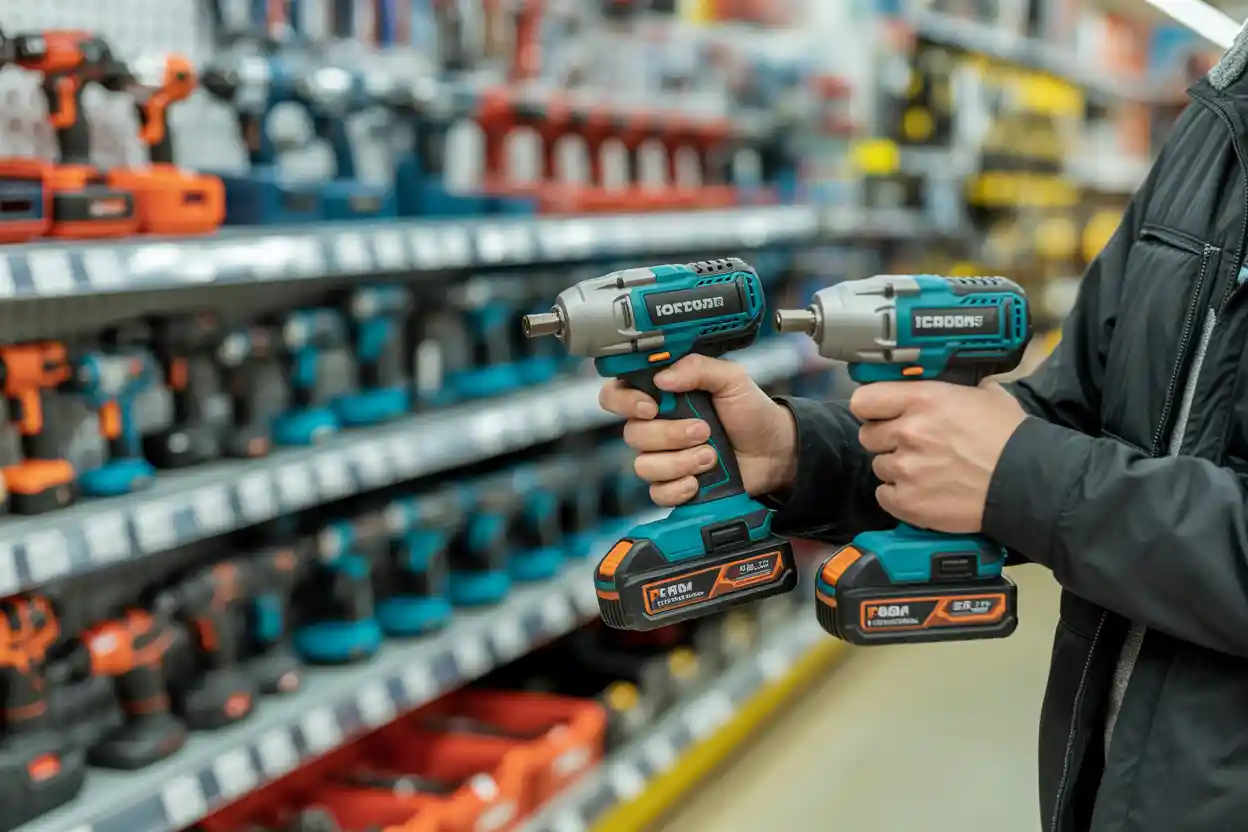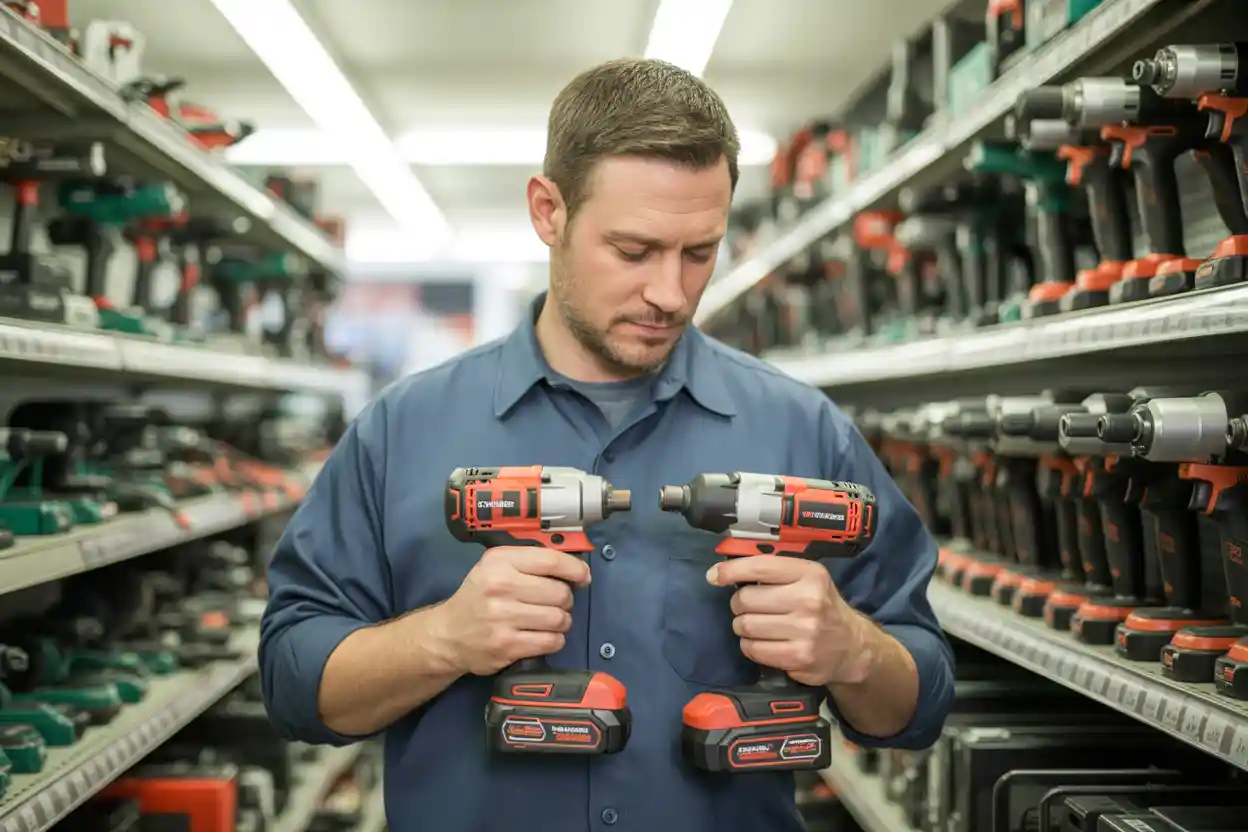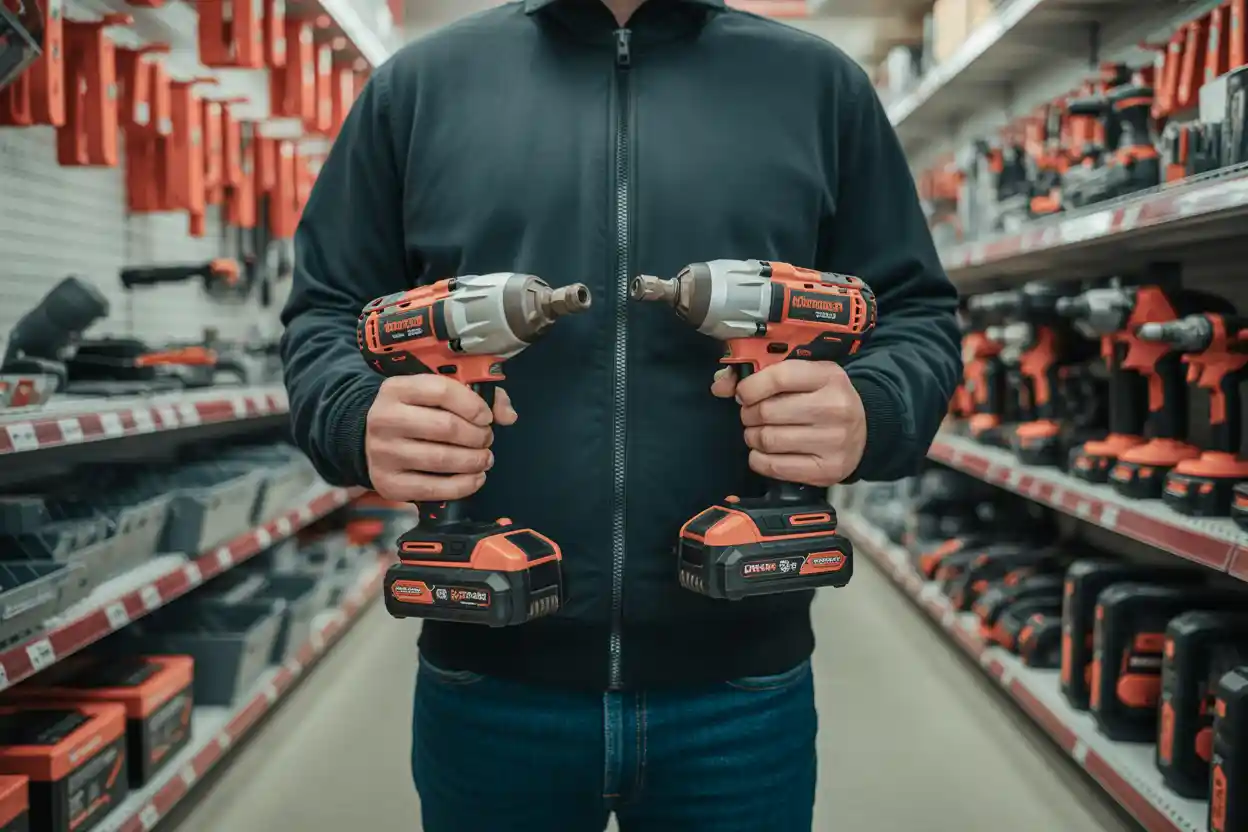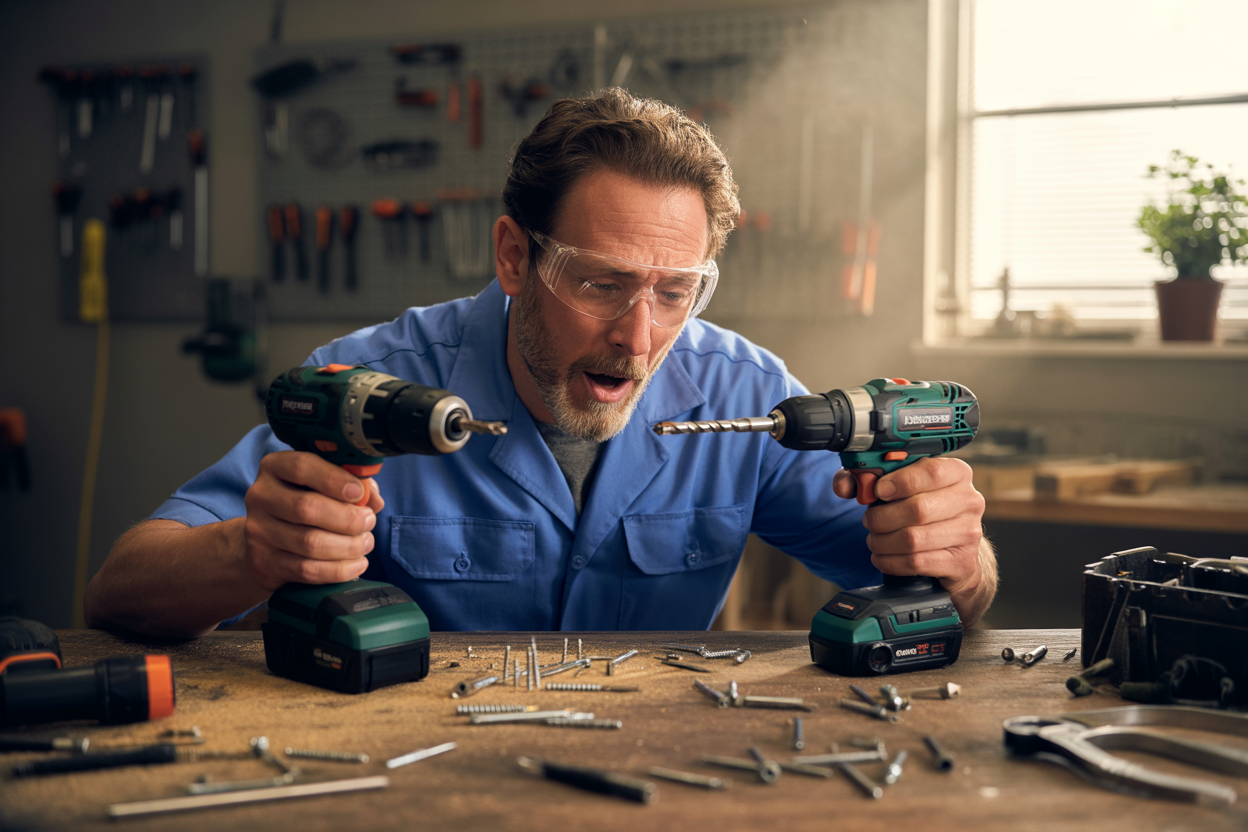
Ever stood in the tool aisle, holding two impact wrenches and wondering, “Which one’s actually right for me?” Yeah, I’ve been there. Choosing a cordless impact wrench1 isn’t about buying the most powerful one—it’s about matching the tool to the job (and your hands).
A cordless impact wrench is chosen based on torque, battery capacity, weight, drive size, and usability. The right one depends on your work type—light tasks, automotive repair, or heavy construction—all require different torque and size combinations.
Finding the right tool is a bit like choosing a car. You don’t buy a sports car to haul bricks, right? Let’s break down what actually matters before you hit that “add to cart” button.
What to look for when buying a cordless impact wrench?
When I pick a new wrench, I don’t just check the specs—I test how it feels. Because at the end of the day, a tool is only as good as your comfort using it.
When buying a cordless impact wrench, check torque (power), battery voltage, drive size, weight, and ergonomics. Look for brushless motors for efficiency, variable speed triggers for control, and CE-certified safety for professional reliability.

Dive deeper: Features that actually matter
If I had a euro for every time someone asked me, “Is this one strong enough?”, I’d have bought another wrench by now.
Here’s how I evaluate them:
| Key Feature | What It Means | Why It Matters |
|---|---|---|
| Torque (Nm) | Rotational force | Higher torque = stronger fastening power |
| Battery (V/Ah) | Voltage and capacity | Impacts runtime and performance |
| Drive Size | 1/4", 3/8", 1/2" | Determines socket compatibility |
| Motor Type | Brushed or brushless | Brushless = more durable and efficient |
| Weight | 1.5–3.5kg | Affects comfort and fatigue |
| Speed Control | Single or variable | Better control for different materials |
Now, why do these matter?
Because if you’re tightening small bolts on a lawnmower, you don’t need the same power as removing rusty lug nuts from a truck. A brushless motor design not only lasts longer but runs cooler and quieter—trust me, your ears (and wrists) will thank you.
I’ve learned the hard way that battery voltage alone doesn’t tell the whole story. A 20V tool with poor torque2 control might struggle where an 18V with better gearing excels. Always test for feel—a good impact wrench should feel like an extension of your arm, not a fight.
How many Nm is a good impact wrench?
When people ask me this, I smile—because “good” depends on what you’re tightening.
A good cordless impact wrench delivers 150–250 Nm for home and light automotive use, 300–600 Nm for medium-duty work, and 800+ Nm for professional or heavy tasks. Choose torque based on the toughest fastener you need to handle.

Dive deeper: Understanding torque ranges
Torque is like muscle—you don’t need a bodybuilder for hanging a picture frame.
Let’s break down common use cases:
| Application | Recommended Torque (Nm) |
|---|---|
| Furniture assembly | 100–150 |
| Motorcycle repair | 200–300 |
| Car maintenance | 400–600 |
| Heavy truck work | 800–1,200+ |
From my experience, a 400–500 Nm wrench covers most garage jobs. I used one recently on a client’s small fleet of vans—it powered through lug nuts like butter but didn’t snap any smaller bolts.
Always remember: torque control matters more than raw power. That’s why many of our YOUWE cordless wrenches include variable torque settings—you get strength when needed, finesse when you don’t.
What is the best impact wrench for home use?
If you’re fixing things around the house or maintaining your own car, you don’t need a beast. You need reliability and balance.
The best cordless impact wrench for home use offers 300–400 Nm torque, a 1/2" drive, a brushless motor, and a lightweight body under 2.5kg. It should have adjustable speeds and a 4.0Ah lithium battery for longer runtime.

Dive deeper: Why balance beats brute force
When I first started doing home repairs, I bought a monster 900 Nm wrench. Big mistake. It was overkill—heavy, loud, and intimidating.
What I learned? Control and comfort matter more.
For DIY and household projects:
- Look for compact housing (fits in tight corners).
- LED lighting helps under cabinets or dark carports.
- Soft grip handles make long tasks easier.
- Fast-charging batteries save waiting time.
A model like YOUWE’s compact 1/2” 18V series hits that sweet spot—it’s strong enough for car wheels yet light enough for daily use.
Tools should fit your rhythm, not slow you down.
What size cordless impact wrench do I need?
This question always comes up right before purchase, and it’s crucial—you can’t use the wrong drive size3 and expect good results.
Choose 1/4" for small screws, 3/8" for medium bolts, and 1/2" for automotive or heavy-duty work. The drive size affects torque capacity and socket fit, so match it to your most frequent task type.

Dive deeper: Finding your perfect match
Think of drive size as shoe size—it has to fit your needs.
| Drive Size | Typical Torque | Common Use |
|---|---|---|
| 1/4" | 100–200 Nm | Electronics, light assembly |
| 3/8" | 200–400 Nm | Home repair, light mechanics |
| 1/2" | 400–1,000+ Nm | Auto, construction, metalwork |
If you’re mostly doing auto repair, 1/2” is your friend—it’s versatile, strong, and socket-compatible across brands.
However, if you’re a [DIY retailer](https://www.leafio.ai/blog/hardware-merchandising/)4 or private label operator, consider stocking multiple drive options to serve both casual users and professionals.
Your customers will thank you for giving them choice and precision.
Conclusion
Choosing a cordless impact wrench isn’t about chasing specs—it’s about matching power, control, and comfort to your daily work. The right tool should feel like a natural extension of your hand—steady, dependable, and ready when you are.
-
Explore this resource to understand the fundamentals of cordless impact wrenches and their applications. ↩
-
Learn about torque measurement to make informed decisions on the right impact wrench for your needs. ↩
-
Understanding drive sizes will help you choose the right impact wrench for your specific tasks. ↩
-
Find insights on selecting tools that cater to both casual users and professionals. ↩






